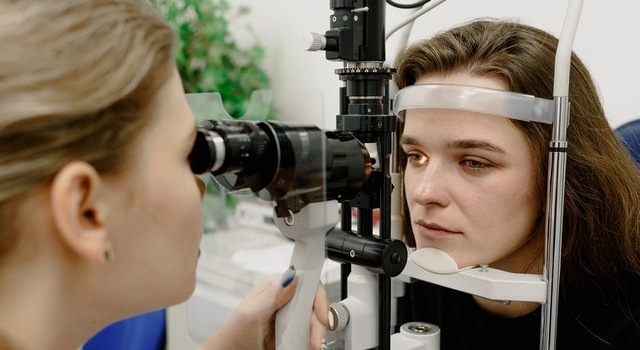
Understanding the differences between vision screenings and eye exams is essential for maintaining optimal eye health. Both procedures can detect vision problems,, but their roles and technology differ vastly.
For example, vision screenings are a preliminary check for potential issues, often utilizing basic yet effective digital tools. In contrast, comprehensive eye exams leverage advanced technology to provide an in-depth analysis of your eye health. This ensures precise diagnosis and treatment.
Learn more about these advanced technologies and how they revolutionize eye care at Bladen Eye Center in Elizabethtown.
Technology Used in Vision Screenings
Vision screenings are quick tests that identify potential vision problems. Traditionally, these screenings involve reading an eye chart or using simple tools to assess vision sharpness and basic eye function. Technological advancements have significantly improved the precision of these screenings, such as:
- Digital Vision Screeners: These devices can quickly measure visual acuity and refractive errors. The can also detect signs of common eye conditions such as amblyopia (lazy eye) and strabismus (crossed eyes).
- Portable Screening Devices: If you're a parent searching for a pediatric eye exam near you, portable devices like handheld autorefractors can provide convenient and effective preliminary screenings that you can use upon referral to an eye doctor. These tools are also particularly useful in schools, community health centers, and remote locations, making vision care more accessible.
- Computerized Eye Charts: Unlike traditional eye charts, computerized versions can adjust for distance and lighting conditions. This provides a more consistent and reliable measurement of visual acuity. They can also test for other vision issues, such as color blindness and contrast sensitivity.
Technology Used in Eye Examinations
Optometrists perform these comprehensive evaluations to assess overall eye health and diagnose eye diseases. Technological innovations have greatly enhanced the thoroughness and efficiency of these exams. This includes:
- Optical Coherence Tomography (OCT Scan): This non-invasive imaging technique captures detailed cross-sectional images of the retina. It helps detect and monitor conditions like glaucoma, macular degeneration, and diabetic retinopathy early.
- Digital Retinal Imaging: High-resolution digital retina imaging allows eye doctors to detect and document changes in the eye's health over time. These images provide a permanent record that your eye doctor can compare at future retinal eye exams to track the progression of eye diseases.
- Automated Refractors and Keratometers: These devices measure the eye's refractive error and the cornea's curvature with high precision. Automated systems also streamline the process of determining the correct prescription for eyeglasses and contact lenses.
- Tonometer: This device measures the intraocular pressure (IOP) inside the eye, a critical factor in diagnosing and managing glaucoma.
Do I Need A Vision Screening or An Eye Exam?
Whether you need a vision screening or a comprehensive eye exam depends on your needs and circumstances. Vision screenings are useful for detecting potential issues early, especially in settings like schools or community centers.
However, they are not a substitute for a comprehensive eye exam, which provides a detailed assessment of your eye health and can diagnose and treat a wide range of eye conditions.
Request A Comprehensive Eye Exam in Elizabethtown
At Bladen Eye Center, we embrace the latest technological advancements to provide you with top-notch eye and vision care. Request your comprehensive eye exam online on our booking page.
